A hate crime is crime where a perpetrator targets a victim because of their physical appearance or perceived membership of a certain social group.

The Violent Crime Control and Law Enforcement Act of 1994, commonly referred to as the 1994 Crime Bill, or the Clinton Crime Bill, is an Act of Congress dealing with crime and law enforcement; it became law in 1994. It is the largest crime bill in the history of the United States and consisted of 356 pages that provided for 100,000 new police officers, $9.7 billion in funding for prisons which were designed with significant input from experienced police officers. Sponsored by U.S. Representative Jack Brooks of Texas, the bill was passed by Congress and signed into law by President Bill Clinton. Then-Senator Joe Biden of Delaware drafted the Senate version of the legislation in cooperation with the National Association of Police Organizations, also incorporating the Assault Weapons ban and the Violence Against Women Act (VAWA) with Senator Orrin Hatch.
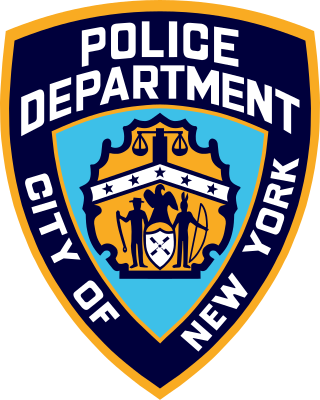
The New York City Police Department (NYPD), officially the City of New York Police Department, is the primary law enforcement agency within New York City. Established on May 23, 1845, the NYPD is the largest, and one of the oldest, municipal police departments in the United States.
Suicide by cop, also known as suicide by police or law-enforcement-assisted suicide, is a suicide method in which a suicidal individual deliberately behaves in a threatening manner, with intent to provoke a lethal response from a public safety or law enforcement officer to end their own life.

The National Fraternal Order of Police (FOP) is a fraternal organization consisting of sworn law enforcement officers in the United States. It reports a membership of over 355,000 members organized in 2,100 local chapters (lodges), state lodges, and the national Grand Lodge. The organization attempts to improve the working conditions of law enforcement officers and the safety of those they serve through education, legislation, information, community involvement, and employee representation.

ACAB, an acronym of the phrase "all cops are bastards", is a political slogan associated with people who are opposed to the police. It is typically written as a catchphrase in graffiti, tattoos or other imagery in public spaces. It is sometimes numerically rendered as "1312", representing the position of the letters in the English alphabet.

Violence against transgender people includes emotional, physical, sexual, or verbal violence targeted towards transgender people. The term has also been applied to hate speech directed at transgender people and at depictions of transgender people in the media that reinforce negative stereotypes about them. Trans and non-binary gender adolescents can experience bashing in the form of bullying and harassment. When compared to their cisgender peers, trans and non-binary gender youth are at increased risk for victimisation, which has been shown to increase their risk of substance abuse.
In modern politics, "law and order" is an ideological approach focusing on harsher enforcement and penalties as ways to reduce crime. Penalties for perpetrators of disorder may include longer terms of imprisonment, mandatory sentencing, three-strikes laws and even capital punishment in some countries. Supporters of "law and order" argue that harsh punishment is the most effective means of crime prevention. Opponents argue that a system of harsh criminal punishment is ultimately ineffective because it self-perpetuates crime and does not address underlying or systemic causes of crime. They furthermore credit it with facilitating greater militarisation of police and contributing to mass incarceration in the United States.
In the United States, domestic terrorism is defined as terrorist acts that were carried out within the United States by U.S. citizens and/or U.S. permanent residents. As of 2021, the United States government considers white supremacists to be the top domestic terrorism threat.
Hate crime laws in the United States are state and federal laws intended to protect against hate crimes. While state laws vary, current statutes permit federal prosecution of hate crimes committed on the basis of a person's characteristics of race, religion, ethnicity, disability, nationality, gender, sexual orientation, and/or gender identity. The U.S. Department of Justice (DOJ), Federal Bureau of Investigation (FBI), and campus police departments are required to collect and publish hate crime statistics.
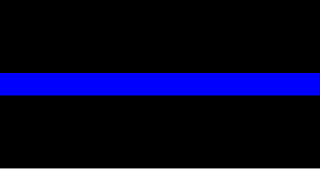
The "thin blue line" is a term that typically refers to the concept of the police as the line between law and order and chaos in society. The "blue" in "thin blue line" refers to the blue color of the uniforms of many police departments. The thin blue line symbol has been used by the Blue Lives Matter movement since 2014, and it has become emblematic of white nationalist, neo-Nazi, and alt-right movements in the US, particularly displayed by attendees of the Unite the Right rally in 2017 and the January 6 Storming of the US Capitol in 2021.
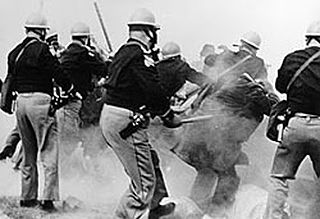
Police brutality is the use of excessive or unnecessary force by personnel affiliated with law enforcement duties when dealing with suspects and civilians.

Black Lives Matter (BLM) is a decentralized political and social movement that seeks to highlight racism, discrimination, and racial inequality experienced by black people and to promote anti-racism. Its primary concerns are police brutality and racially motivated violence against black people. The movement began in response to the killings of Trayvon Martin, Michael Brown, Eric Garner, and Rekia Boyd, among others. BLM and its related organizations typically advocate for various policy changes related to black liberation and criminal justice reform. While there are specific organizations that label themselves "Black Lives Matter", such as the Black Lives Matter Global Network Foundation, the overall movement is a decentralized network with no formal hierarchy. As of 2021, there are about 40 chapters in the United States and Canada. The slogan "Black Lives Matter" itself has not been trademarked by any group.

On December 20, 2014, Ismaaiyl Abdullah Brinsley shot and killed Rafael Ramos and Wenjian Liu — two on-duty New York City Police Department (NYPD) officers — in the Bedford–Stuyvesant neighborhood of Brooklyn. Brinsley then fled into the New York City Subway, where he killed himself. Earlier in the day, before he killed Ramos and Liu, Brinsley had shot and wounded his ex-girlfriend Shaneka Thompson in Baltimore after initially pointing the gun at his own head.

DeRay Mckesson is an American civil rights activist, podcaster, and former school administrator. An early supporter of the Black Lives Matter movement, he has been active in the protests in Ferguson, Missouri, and Baltimore, Maryland and on social media outlets such as Twitter and Instagram. He has also written for HuffPost and The Guardian. Along with Johnetta Elzie, Brittany Packnett, and Samuel Sinyangwe, Mckesson launched Campaign Zero, a policy platform to end police violence. He is currently part of Crooked Media and hosts Pod Save the People.
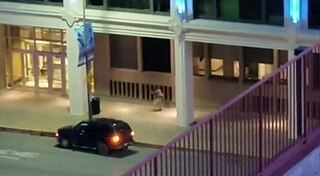
On July 7, 2016, Micah Xavier Johnson ambushed and shot police officers in Dallas, Texas, killing five, injuring nine others, and wounding two civilians. Johnson, a 25-year-old Army Reserve Afghan War veteran, was angry over police shootings of black men. He shot the officers at the end of a protest against the recent killings by police of Alton Sterling in Baton Rouge, Louisiana, and Philando Castile in Falcon Heights, Minnesota.
The presence of LGBTQ officers in law enforcement has a history of controversy. As times have changed, police forces have adapted by adding LGBTQ divisions, officers and committees within their ranks to account for legislation established by governments to protect individuals who previously had little or no voice when it came to laws impacting their own communities.

Anti-police sentiment refers to a social group or individual's attitude and stance against the policing system.

Copaganda is propaganda efforts to shape public opinion about police or counter criticism of police and anti-police sentiment.
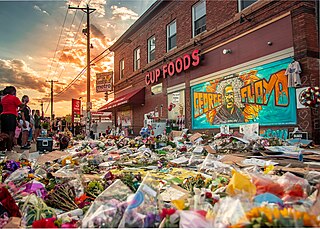
The Black Lives Matter movement has been depicted and documented in various artistic forms and mediums including film, song, television, and the visual arts. In some instances this has taken place in the form of protest art. These cultural representations have also grown organically among artists who seek to partake in activist efforts in support or in recognition of the Black Lives Matter movement. The themes conveyed in these artistic works address the history of racism and injustice toward people of color in the United States and typically express sentiments of anger and fear as well as solace and hope.
















